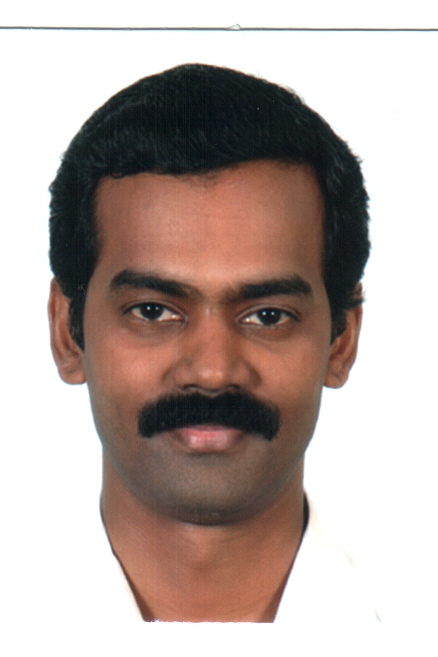என்றுமே குழந்தைகள் இனிமையானவர்களே. குழந்தைகள் மருத்துவராக இருப்பதில் பெருமகிழ்ச்சி என்னவெனில், நாம் சந்திக்கும் ஒவ்வொரு நோயாளியும் சுயநலமில்லா தூய உயிர்கள்.
ஆனாலும் சில வேளைகளில், நான் என் பொருமையை இழப்பது உண்டு. காரணம் ஆயிரம் இருப்பினும், எனக்கு என்னிடமே பிடிக்காத ஒரு செய்கை என் கோபமே. திருத்தமாக ஆய்வு செய்தாலும், என் கோபம், அந்த பெற்றோர்கள் மேலே திரும்பும். அவர்களுடைய குழந்தைக்கு, அவர்கள் அறிந்தும் அறியாமலும் செய்யும் சிற்சில காரியங்கள், அனுபவம் என்ற பெயரால், வீட்டில் இருக்கும் பெரியவர்கள் கூறும் மருத்துவங்கள், குழந்தையின் உடல் நிலைக்கு ஏதுவாகிவிடுகிறது.
இந்த தொடரில், நான் சந்தித்த சில சுவையான பெற்றோர் மற்றும் குழந்தைகளை பற்றி எழுதுவதோடு, குழந்தைகளுக்கான ஆகார மற்றும் ஊட்டச்சத்து பற்றிய விபரங்களையும் எழுத விழைகிறேன்.
ஒரு சிசுவின் வாழ்க்கை தொடக்கமே உணவு தான். அதிகபட்சமாக ஐந்து வயதிற்குட்பட்ட குழந்தைகளின் இறப்பு விகிதம் இந்தியாவில் தான் உள்ளது. 2006 -ம் வருடம் உலக கணக்கியலின்படி, முதன்முறையாக ஐந்து வயதிற்க்குட்பட்ட குழந்தைகளின் இறப்பு விகிதம் 10 மில்லியனில் இருந்து 9.7 மில்லியனாக சரிந்தது. இந்த எண்ணிக்கையில் தெற்காசியாவின் பங்கு மட்டும் 3.1 மில்லியன்; இதனிலும் இந்தியாவின் பங்கோ 2.1 மில்லியன் - அதாவது, ஐந்து வயதிற்குட்பட்ட குழந்தைகளின் இறப்பு உலக விகிதாசாரத்தில் இந்தியா மட்டுமே 21% பங்களிப்பிற்கு உடந்தையாகிறது. இவற்றில் பெரும்பாலான மரணங்கள், சிசு பருவத்திலேயே (பிறந்த முதல் ஒரு மாத காலம்) நிகழ்கிறது. இவ்விறப்பு விகிதத்தின் சரிவே நமது நாட்டின் "4- ஆம் புத்தாயிரமாண்டு முன்னேற்ற இலக்கில்" முயற்சிக்கு சான்றாகும்.
ஐந்து வயதுக்குட்பட்ட குழந்தைகளில், உலகில் மூன்றில் ஒரு பங்கு குழந்தைகள், அதாவது சுமார் 55 மில்லியன் குழந்தைகள் இந்தியாவில் தான் உள்ளனர். இக்குழந்தைகளில் ஏற்படும் 50 - 60 சதவிகித மரணங்களுக்கான காரணம், ஊட்டக்குறைபாடு. இளம் ஊட்டகுறையுள்ள குழந்தைகளின் எண்ணிக்கை, பசி, பிணி ஒழிப்புக்காக வடிவனைக்கப்பட்ட "1- ஆம் புத்தாயிரமாண்டு இலக்கின்படி" நமது நாட்டின் முன்னேற்றத்தை பிரதிபலிக்கும் காரணியாகும். இந்தியாவில் 1990 - ஆம் ஆண்டிலிருந்து, சராசரியாக ஒருவருடத்திற்கு, 0.9% ஊட்டக்குறைபாடு சரிந்து வருகிறது. இச்ச்ரிவின் வேகம் போதுமான அளவு அதிகரித்தால் தான், ஊட்டகுறைபாட்டை 2015-திற்குள் பாதியாக குறைக்கும் "புத்தாயிரமாண்டு இலக்கினை" நாம் அடைய முடியும். வளரும் நாடுகளில், சராசரி குழந்தைகளின் எடையானது, மூன்றாம் மாதத்திலிருந்து குறைய ஆரம்பித்து, தொடர்ந்து ஒரு வயதிற்குள் மேலும் சரிவை சந்திப்பதாக, "உலக சுகாதார நிறுவனத்தின்" உலகளாவிய "குழந்தைகள் வளர்ச்சி மற்றும் ஊட்டக்குறைக்கான த்கவல் களஞ்சியம்" கூறுகிறது. "மூன்றாம் தேசிய குடும்ப உடல்நல அளவீடு" முடிவுகளும் குழந்தைக்கு 6 மாதம் முடிவடைவதற்குள் 29.5% குழந்தைகள் ஊட்டகுறை அடைவதாக கூறுகிறது. இம்முடிவுகள், வளர்ச்சி வழுவுதல் மற்றும் அதனால் ஏற்படும் பாதக விளைவுகளையும் தடுக்க ஆரம்ப நிலையிலேயே தலையிட வேண்டிய தேவையை கோடிட்டு காட்டுகிறது.
பிறந்த ஒரு மணிநேரத்திற்குள்ளாகவே தாய்ப்பாலூட்டுதல் மற்றும் 6 மாத காலத்திற்கு தனித்துவ தாய்பால் உணவு ஆகியவையே 1ஆம் மற்றும் 4ஆம், முறையே குழந்தைகள் ஊட்டகுறை மற்றும் மரணங்கள் தடுப்புக்கான புத்தாயிரமாண்டு இலக்கினை அடைவதற்கான ஆதார தலையீடுகளாகும்.



